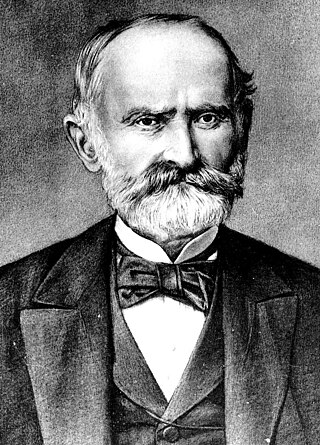
Josif Pančić was a Serbian botanist, a doctor of medicine, a lecturer at the Great School, and the first president of the Serbian Royal Academy. He extensively documented the flora of Serbia, and is credited with having classified many species of plants which were unknown to the botanical community at that time. Pančić is credited with discovering the Serbian spruce. He is regarded as the father of Serbian botany.

Jovan Jovanović Zmaj Gymnasium is a secondary school in Novi Sad, Serbia. It is named after Jovan Jovanović Zmaj, a Serb poet. It was founded in 1810 by a donation of a wealthy merchant Sava Vuković from Novi Sad. Over the years the school developed into a prestigious institution whose alumni include numerous notable historical individuals.
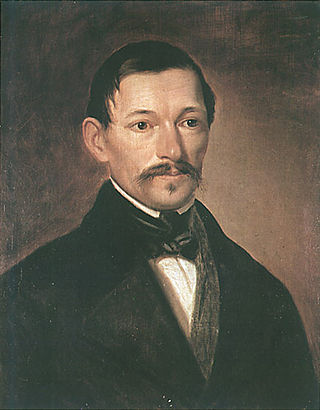
Jovan Sterija Popović was a Serbian playwright, poet, lawyer, philosopher and pedagogue who taught at the Belgrade Higher School. Sterija was recognized by his contemporaries as the one of the leading Serbian intellectuals and he is regarded as one of the best comic playwrights in Serbian literature.

Đuro Daničić, born Đorđe Popović and also known as Đura Daničić, was a Serbian philologist, translator, linguistic historian and lexicographer. He was a prolific scholar at the Belgrade Lyceum.
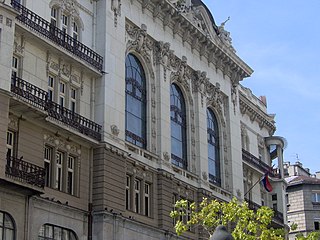
The Serbian Academy of Sciences and Arts is a national academy and the most prominent academic institution in Serbia, founded in 1841 as Society of Serbian Letters.

Jovan Đorđević was a Serbian writer, dramatist, Minister of Education and the co-founder of the Novi Sad Serbian National Theatre in 1861, the National Theatre in Belgrade in 1868 and the Academy of Dramatic Art in 1870. He is most famous for writing the lyrics to the Serbian National anthem Bože pravde in 1872. He was also a member of Matica Srpska.
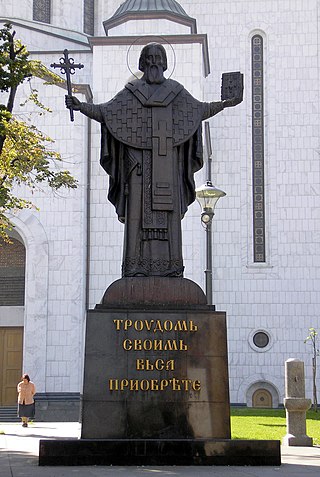
The roots of law, legal thought and education in Serbia go back to the 13th century. This is owed to Rastko Nemanjić, who was declared a saint under the name St. Sava. Rastko, the brother of the first Serbian king Stefan Nemanjić, was the founder of not only the ecclesiastical independence, but he also has instituted the Serbian education, literature, health, the legal system and science.
Vuk Karadžić, is а Yugoslavian historical drama television series which depicts the life and work of Vuk Stefanović Karadžić, a Serbian linguist and reformer of the Serbian language.

The Karlovci Gymnasium is the high school (gymnasium) located in the town of Sremski Karlovci. It is the oldest secondary school in Serbia. This type of school is comparable to U.S. college preparatory schools or English grammar schools.

The University Library Svetozar Marković is the main library in the University of Belgrade system, named after Svetozar Marković, a Serbian political activist in the 19th century. It is located on King Alexander Boulevard, close to the Faculty of Law and adjacent to the Faculties of Civil Engineering, Electrical Engineering, and Architecture. Serves the educational and scientific needs of students, academics, and scientists. Library Day is 24 May, a day commemorating Slavic educators St. Cyril and Methodius. At the founding of the library, the collection contained 57,254 publications consisting of monographs and serials. Today, the library contains roughly 1,700,000 publications.

Ljubomir Nenadović was Serbian writer, poet, translator, diplomat, minister of education and member of the Serbian Royal Academy.

Dimitrije Nešić was a Serbian mathematician, professor at the Lyceum of the Principality of Serbia and president of the Serbian Royal Academy.
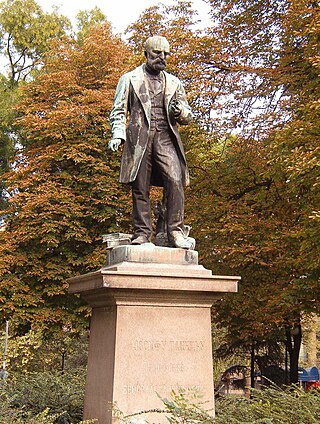
Monument to Josif Pančić was erected in Belgrade in the memory of Јоsif Pančić (1814–1888), a Serbian doctor, scientist, botanist and the first president of Serbian Royal Academy. The monument is located in the Academy Park and has the status of the cultural monument. The monument was erected in 1897, as the work of the sculptor Đorđe Jovanović, one of the first local educated sculptors.
Konstantin (Kosta) Branković was a Serbian pedagogue and publicist from the Kingdom of Hungary. He was one of the first six-member tutorial staff at the Lyceum of the Principality of Serbia in Kragujevac before Belgrade became the capital city and a new Lyceum was opened there.

Atanasije Nikolić was a Serbian teacher and writer, the first mathematics professor and rector at the Lyceum in Kragujevac. He wrote the first undergraduate textbooks in mathematics, algebra, geometry, trigonometry in the Serbian language. He was also employed by the Serbian Ministry of Construction and Public Works as an architect in the then capital city of Kragujevac and later Belgrade.
Nedeljko Koshanin was a scientist biologist, university professor and academic at the Serbian Royal Academy, now the Serbian Academy of Sciences and Arts. He was the manager of the Jevremovac Botanical Institute and Botanical Garden of the University of Belgrade He initiated the publication of the Gazette of the Botanical Institute and Botanical Gardens, which had collaborated with over 90 botanical institutions worldwide. He described many new plant species on his own or in collaboration with prominent botanists in the world, and foreign and domestic researchers named his newly discovered plant species out of respect for his work. After the "Josif Pančić era", his work marked the epoch (1918-1934) in the development of botany in the country, known as the "Košanin era".
Mihailo Rašković was a chemist, professor at the Belgrade Lyceum and the Visoka škola. he is best remembered in Serbia as one of the fathers of modern Chemistry along with Sima Lozanić and Marko Leko.
Vuk Marinković was a Serbian physician, pedagogue and linguist, professor and rector of the Lyceum (Belgrade). He is credited as the founder of modern physics in Serbia.

Society of Serbian Literature, founded in 19 November 1841 and confirmed by the seal and signature of prince Mihailo Obrenović.



















